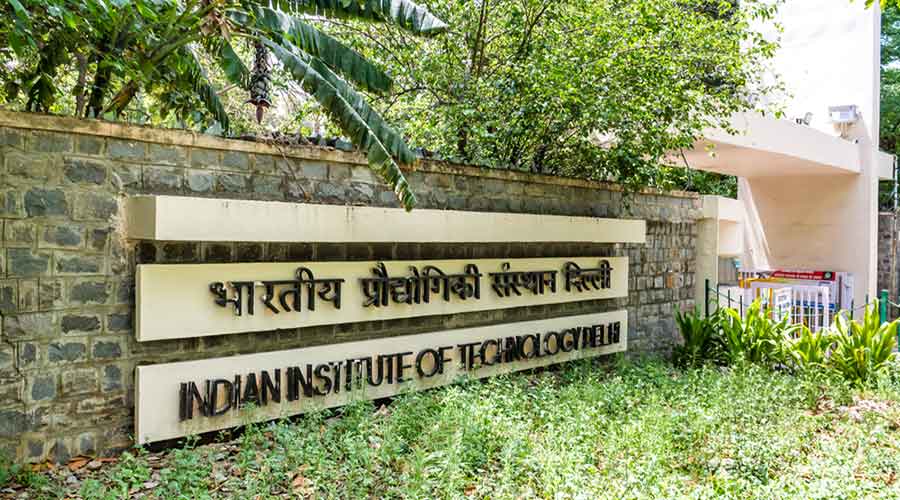When Rajesh Jha, an assistant professor at Delhi University-affiliated Rajdhani College, begins teaching his first-year political science honours class later this month, he will have 75 students to interact with.
Jha says clarifying the doubts of 75 students at an online class will be challenging. Even after the college opens for in-person classes in the future, the situation will remain “extremely difficult”, he said.
“Two years ago, a class of political science honours students in our college had 60 students. On any given day, 50 students came. Each classroom can accommodate 40 students. We adjusted with difficulty,” Jha, a member of DU’s executive council, said.
“Now with 75 students, it will be extremely difficult to manage.”
The student strength in Jha’s honours class has jumped from 60 in 2018 to 75 now to accommodate the 10 per cent quota for the Economically Weaker Sections (EWS) among the upper castes at central education institutions (CEIs) like the IITs, IIMs and central universities.
The Centre had got the quota enacted through Parliament in the run-up to the 2019 general election, despite the absence of any serious political pressure for the move.
The then human resource development ministry asked the CEIs to raise their student intake by 25 per cent — staggering the increase over the 2019-20 and 2020-21 academic sessions — so that the number of seats under the non-reserved category did not fall. The CEIs have complied.
Yet, hardly any classrooms, laboratories or hostels have been added nor extra teaching and non-teaching posts sanctioned — all necessary steps to accommodate an increased number of students without hurting the quality of education imparted.
A former education ministry official said the government estimated that about Rs 40,000 crore would be needed to support the required infrastructure expansion at the CEIs.
However, the allocation towards EWS quota implementation in the 2019-20 and 2020-21 budgets stood at Rs 816 crore and Rs 1,437 crore, respectively.
In September last year, T.V. Somanathan, secretary to the department of expenditure under the finance ministry, wrote to the education ministry not to create any new teaching or non-teaching posts at the CEIs.
A government report said the overall teacher-student ratio at India’s higher education institutions was 1:24 in 2018, worse than the ratio of about 1:19 obtaining in Brazil and China, countries to which India is often compared in matters of economic growth and human development indices.
This ratio would have worsened significantly since 2019, with the student intake increased at the CEIs without any increase in faculty strength.
Yet, the government has itself set a teacher-student ratio of 1:10 as one of the benchmarks if educational institutions want the “institution of eminence” tag.
“The government has forced institutions to increase their seats but is not inclined to meet their requirements. Ultimately, quality will suffer. This is not social justice,” Jha said.
The overall teacher vacancy at the CEIs is now 35 per cent. Jha estimated that if one took into account the teaching posts that should have been created once the EWS quota was implemented, the vacancy should stand at nearly 50 per cent.
Asked about teacher vacancies, education minister Ramesh Pokhriyal told the Lok Sabha in a written reply on September 19: “The vacancies keep arising due to retirement, resignation and additional requirements on account of enhanced students’ strength. The institutions are adopting various measures to address faculty shortages in order to ensure that studies of students are not affected which, inter alia, includes engaging research scholars, contract, re-employed, adjunct and visiting faculty.”
Jha said appointing contract teachers or having adjunct or visiting faculty was not the best way of ensuring quality education.
A senior IIT official who declined to be quoted said each IIT provided a hostel berth to every undergraduate student. While the institutes have collectively increased their BTech seats by nearly 4,000 since 2019, their hostel facilities remain the same, he said.
Each of the older IITs needs between Rs 1,000 crore and Rs 3,000 crore for infrastructure expansion, which includes the creation of additional laboratories and classrooms, the IIT official said.
“Classes are now happening online. When the IITs reopen (for physical classes), accommodation will pose a big challenge. Without expansion, quality will suffer,” he said.
The vice-chancellor of a central university said the institutions were being pushed to take loans from the newly started Higher Education Funding Authority for infrastructure expansion.
“Many institutions are reluctant to take loans since they have to pay back a portion. Ultimately, the burden will be passed on to the students. So, not much expansion is happening,” he said.
Jha said shifting the burden to the students would be unfair, especially on the poorer students who are already struggling to pursue higher studies.
In 2008, the UPA government had begun implementing a 27 per cent OBC quota in admission to higher education courses. Institutions were asked to increase their seats by 54 per cent over six years. It’s widely held that the government had at the time provided the funds necessary to expand infrastructure and faculty strength.
Deepak Malghan, an IIM Bangalore teacher, criticised the EWS quota itself, saying its introduction betrayed a flawed understanding of the concept of reservation.
“The EWS quota is a Trojan horse meant to kill affirmative action in India. It is based on a completely flawed understanding of reservation as a welfare programme,” he said.
“Reservation is about representation. What was most interesting to me, however, was that there was no discussion at all about the EWS quota on elite public institution campuses — unlike, say, when reservations were extended to the OBCs.”
An email sent to the education ministry on November 17 seeking its reaction to the concerns over poor funding and lack of expansion in teacher strength has brought no response.










